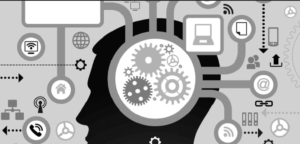
Social Engineering

Social Engineering
As a seasoned business owner, I understand the importance of safeguarding your company against the ever-evolving threats of the digital landscape. One of the most insidious and pervasive of these threats is social engineering – a manipulation technique that exploits the human element of your organization. In this comprehensive guide, we will delve into the intricate world of social engineering, exploring its psychology, common techniques, and the impact it can have on your business. Most importantly, we will discuss practical strategies to protect your company and empower your employees to become the first line of defense against these sophisticated attacks.
Contents
- 1 Understanding the Psychology Behind Social Engineering
- 2 Common Social Engineering Techniques
- 3 The Impact of Social Engineering on Businesses
- 4 Protecting Your Business from Attacks
- 5 Educating Employees About Social Engineering
- 6 Implementing Security Measures to Prevent Social Engineering
- 7 Conducting Social Engineering Awareness Training
- 8 Case Studies: Real-life Examples of Attacks
- 9 Taking a Proactive Approach to Protect Your Business from Attacks
Understanding the Psychology Behind Social Engineering
At the core of social engineering lies a deep understanding of human psychology. Attackers leverage our innate tendencies, such as trust, curiosity, and a desire to be helpful, to gain access to sensitive information or manipulate us into taking actions that compromise security. By studying the cognitive biases and social dynamics that make us vulnerable, we can better anticipate and mitigate these threats.
Common Social Engineering Techniques

social engineering
Social engineering attacks can take many forms, each designed to exploit specific vulnerabilities. Some of the most prevalent techniques include phishing, pretexting, baiting, and tailgating. We’ll examine each of these in detail, providing real-world examples and highlighting the warning signs that can help your employees identify and thwart these attempts.
The Impact of Social Engineering on Businesses
The consequences of a successful attack can be devastating for businesses of all sizes. From financial losses and data breaches to reputational damage and regulatory fines, the impact can ripple through every aspect of your organization. Understanding the potential ramifications will motivate you to take proactive steps to protect your company.
Protecting Your Business from Attacks
Safeguarding your business against social engineering attacks requires a multi-layered approach. We’ll discuss the importance of implementing robust security measures, such as access controls, data encryption, and secure communication protocols. Additionally, we’ll explore the crucial role of employee education and the implementation of social engineering awareness training programs.
Educating Employees About Social Engineering
Your employees are the first line of defense against attacks. By providing them with comprehensive training on the various techniques used by attackers, you can empower them to recognize and respond appropriately to these threats. We’ll dive into the key elements of an effective social engineering education program, including identifying red flags, reporting suspicious activities, and fostering a culture of security awareness.
Implementing Security Measures to Prevent Social Engineering
Technological solutions play a crucial role in mitigating the risks of social engineering. From implementing multi-factor authentication and network monitoring to keeping software and systems up-to-date, we’ll explore a range of security measures that can bolster your defenses against these attacks.
Conducting Social Engineering Awareness Training
Ongoing social engineering awareness training is essential for maintaining a strong security posture. We’ll discuss the importance of regularly testing your employees’ responses to simulated attacks, providing feedback, and continuously improving your training program to stay ahead of evolving threats.
Case Studies: Real-life Examples of Attacks
To illustrate the real-world impact of social engineering, we’ll examine several case studies that highlight the tactics used by attackers and the lessons learned by the affected organizations. These real-life examples will provide valuable insights and inspire you to take proactive steps to protect your business.
Taking a Proactive Approach to Protect Your Business from Attacks
In today’s dynamic business landscape, the threat of engineering is ever-present. By understanding the psychology behind these attacks, implementing robust security measures, and empowering your employees to be vigilant, you can safeguard your organization and its valuable assets. Remember, the key to success lies in a proactive and comprehensive approach to defense. Let’s work together to ensure your business remains resilient in the face of these sophisticated threats.
